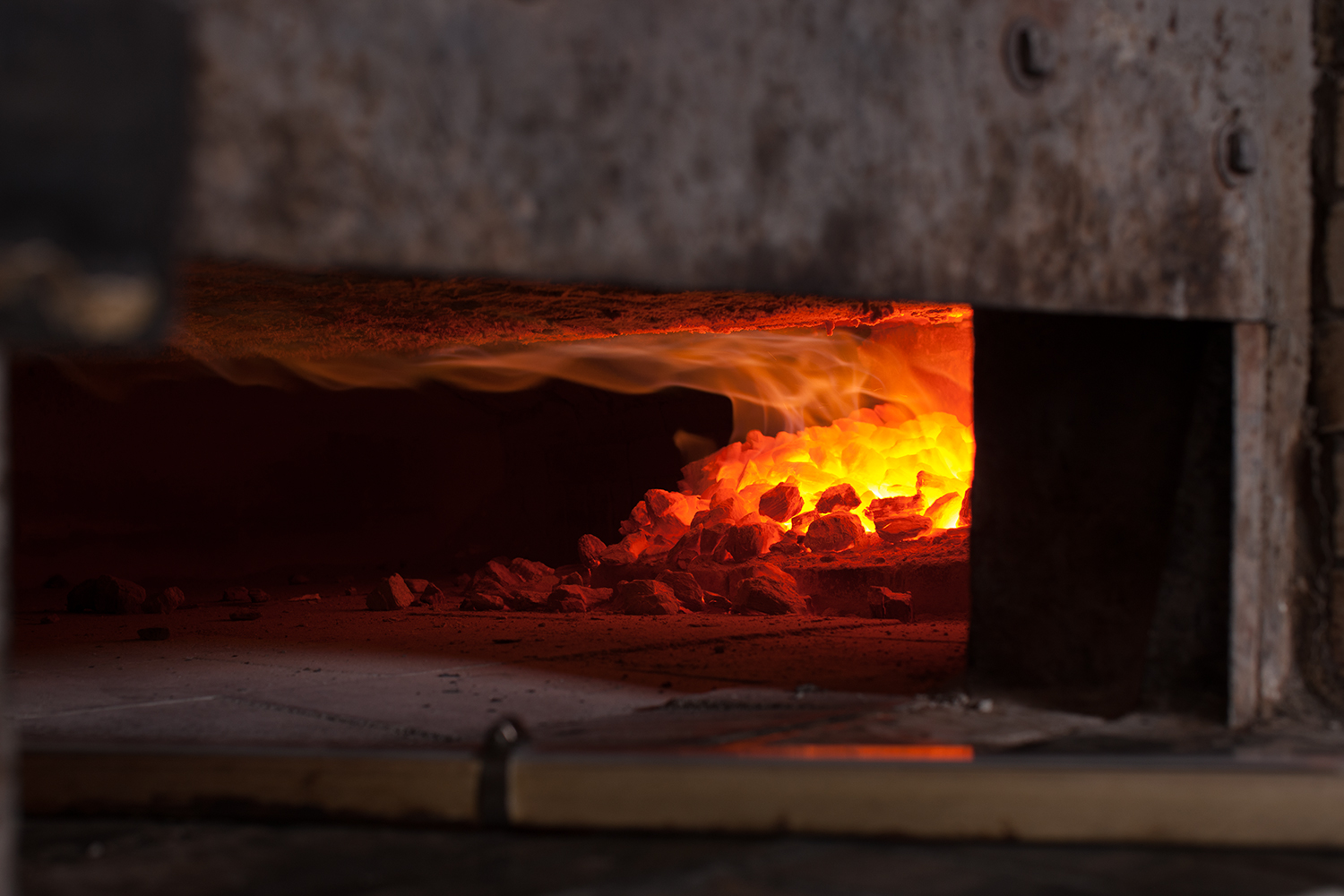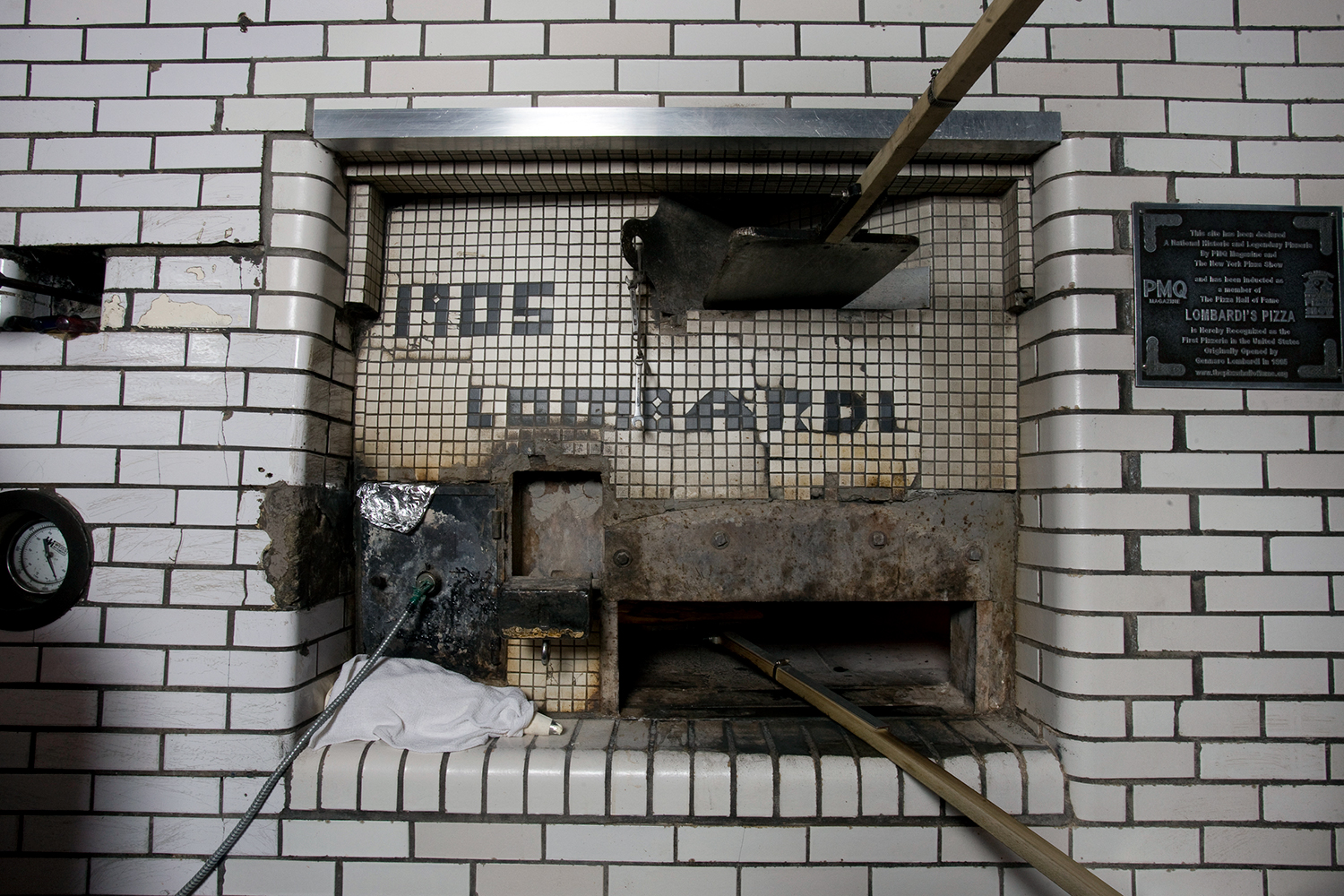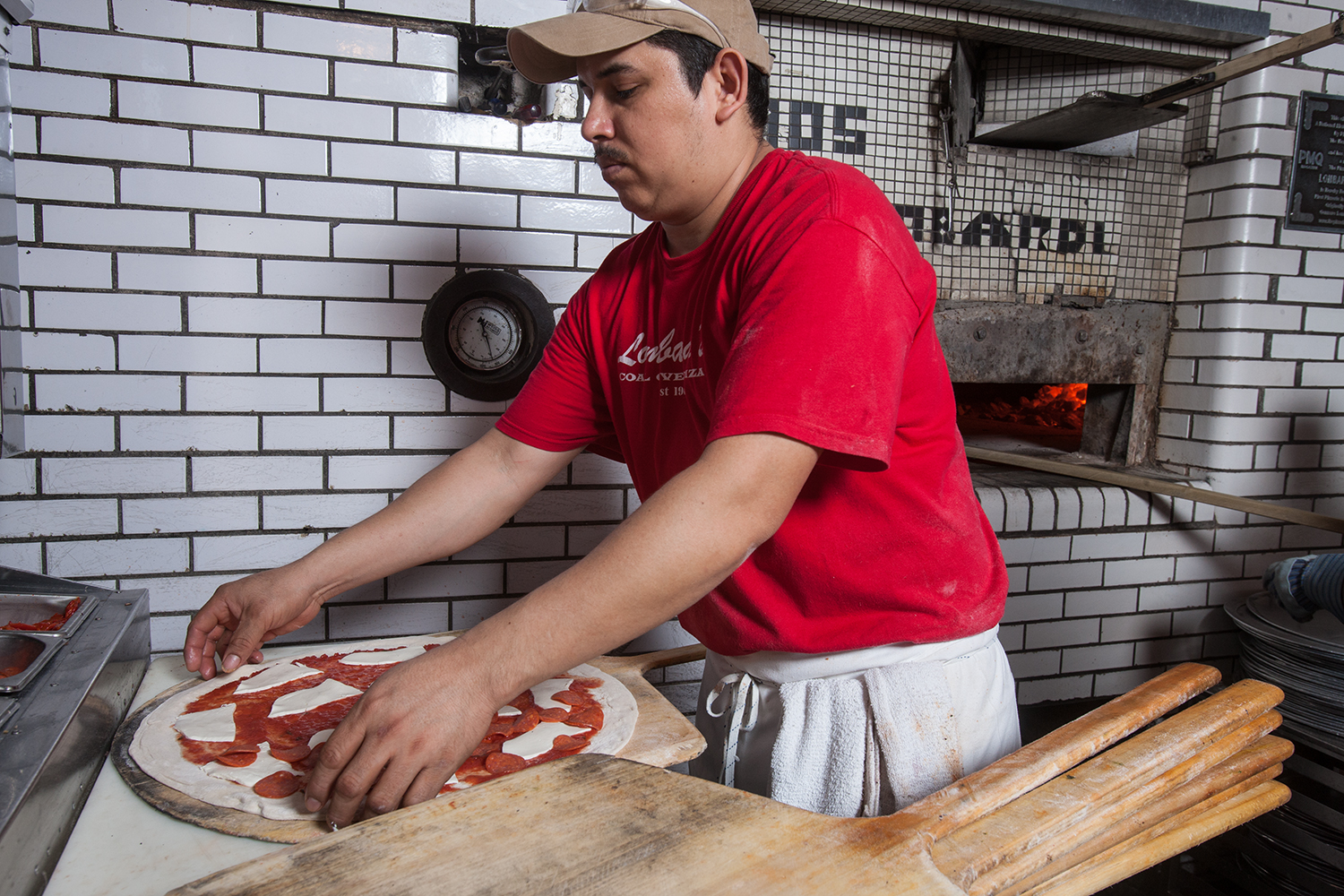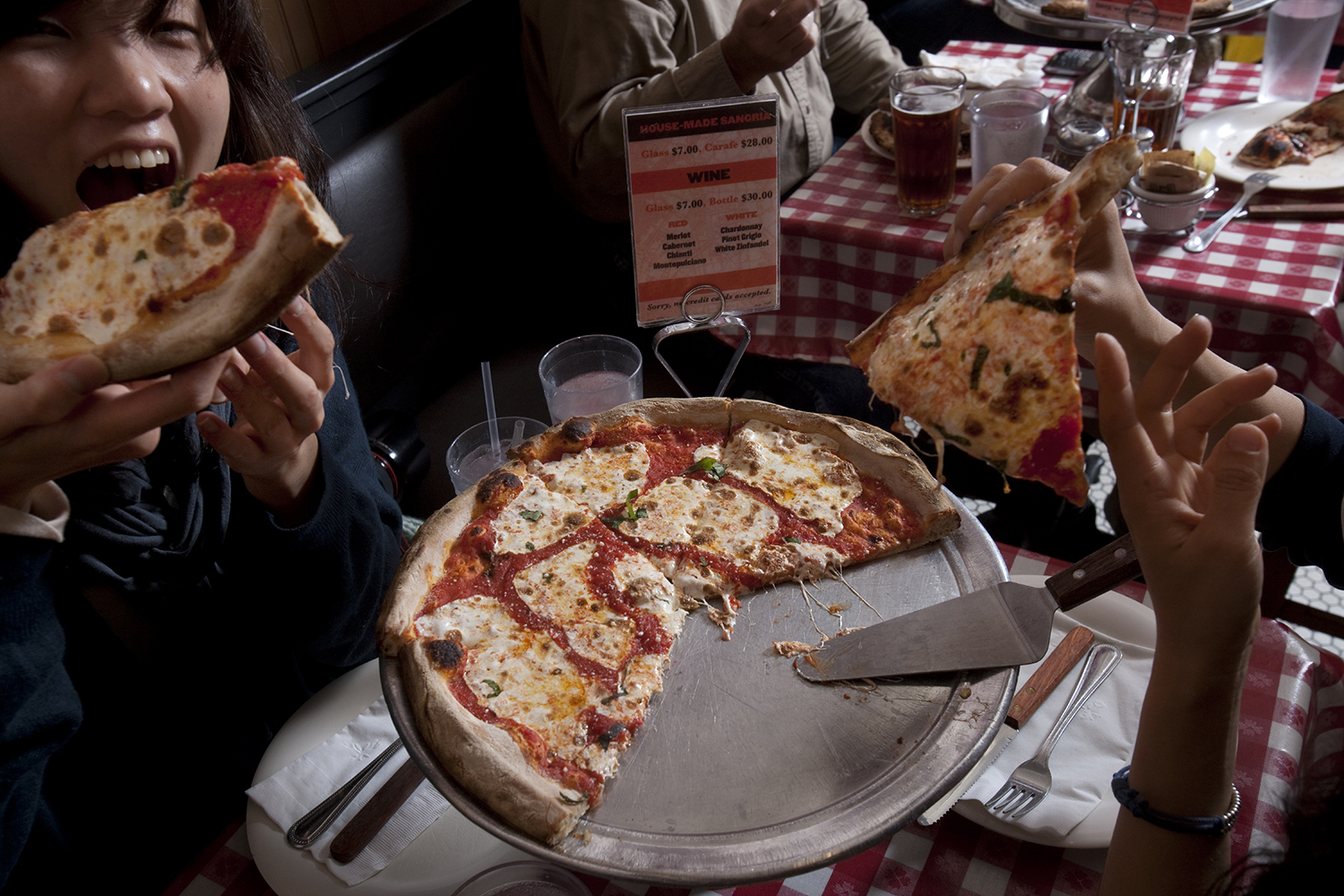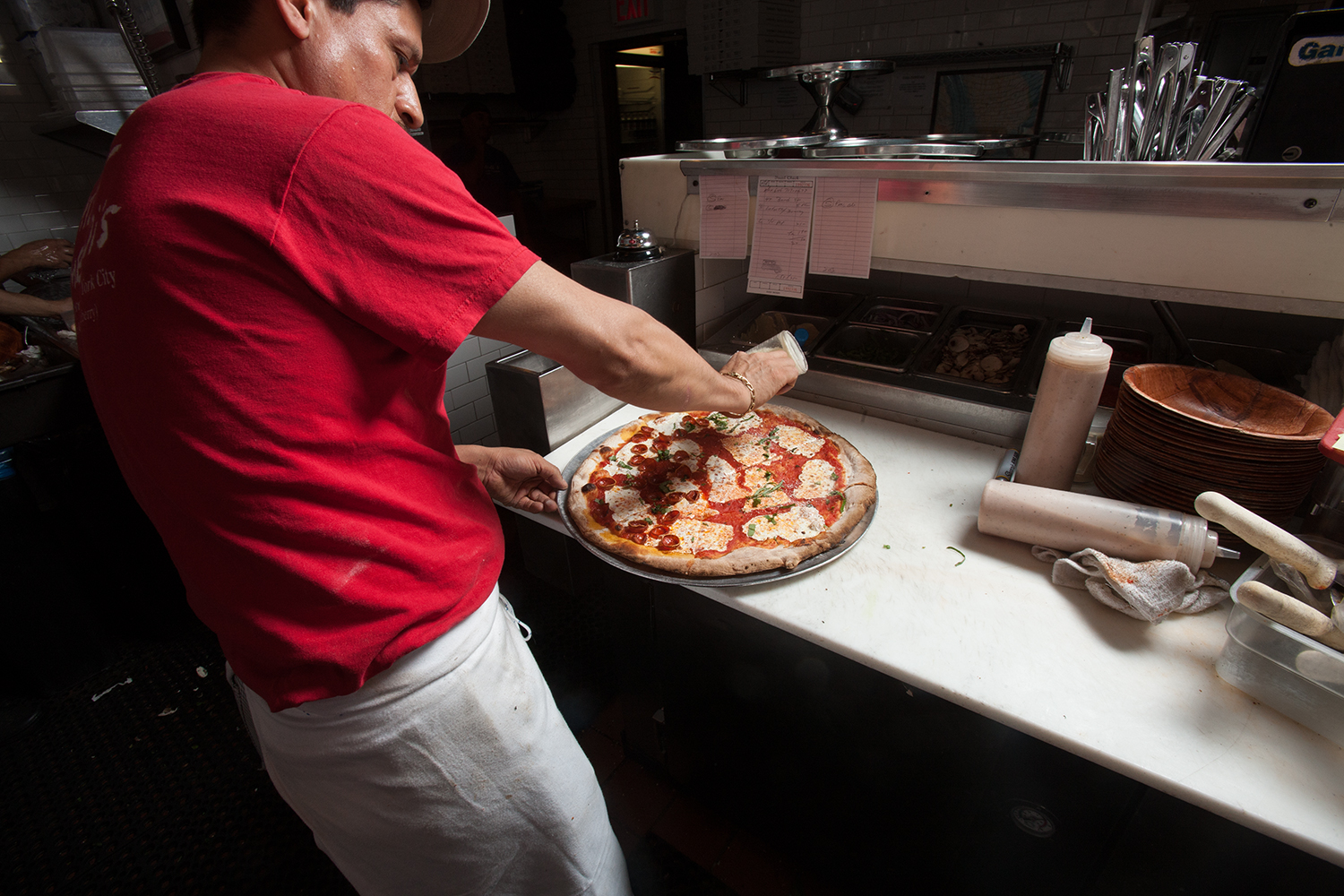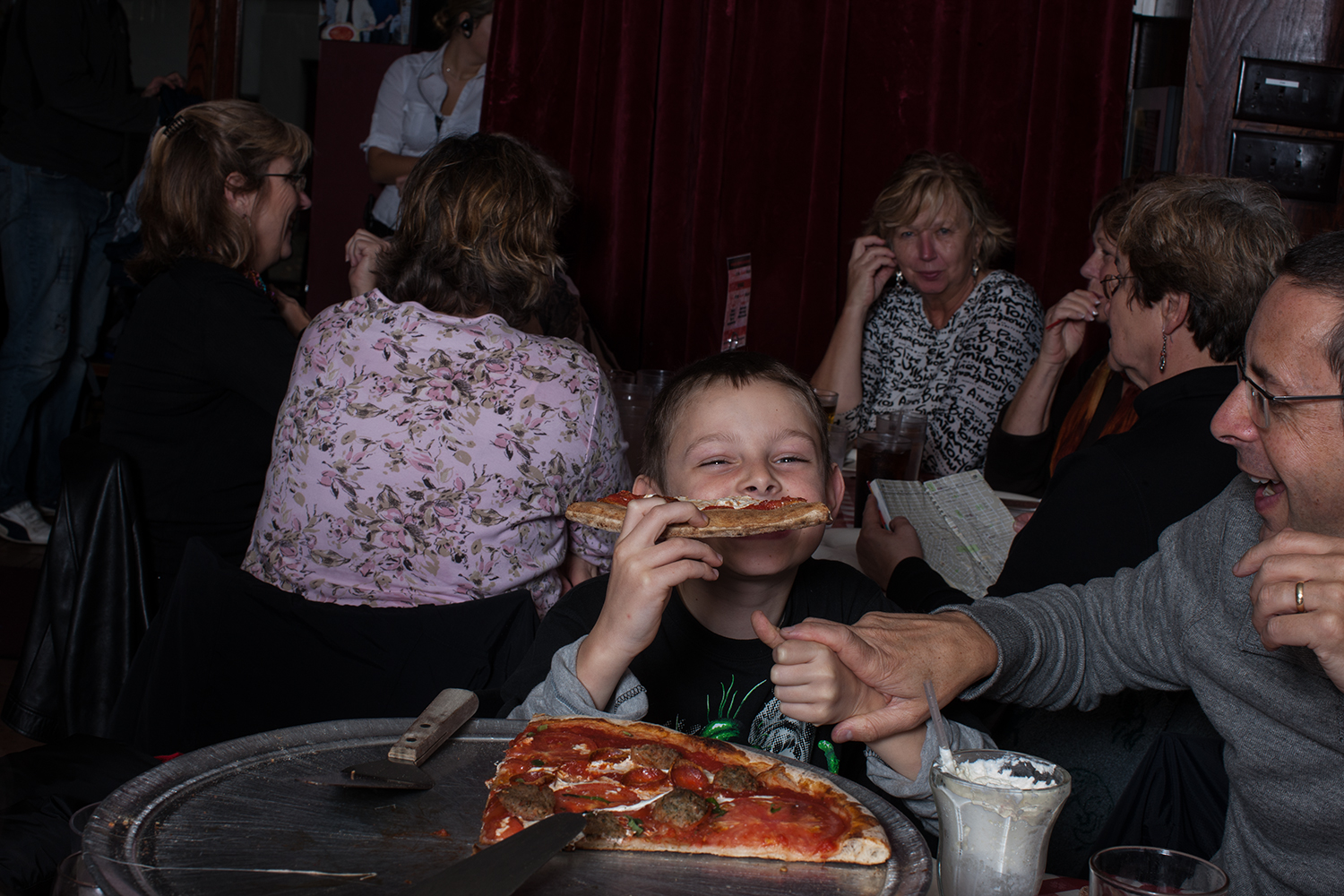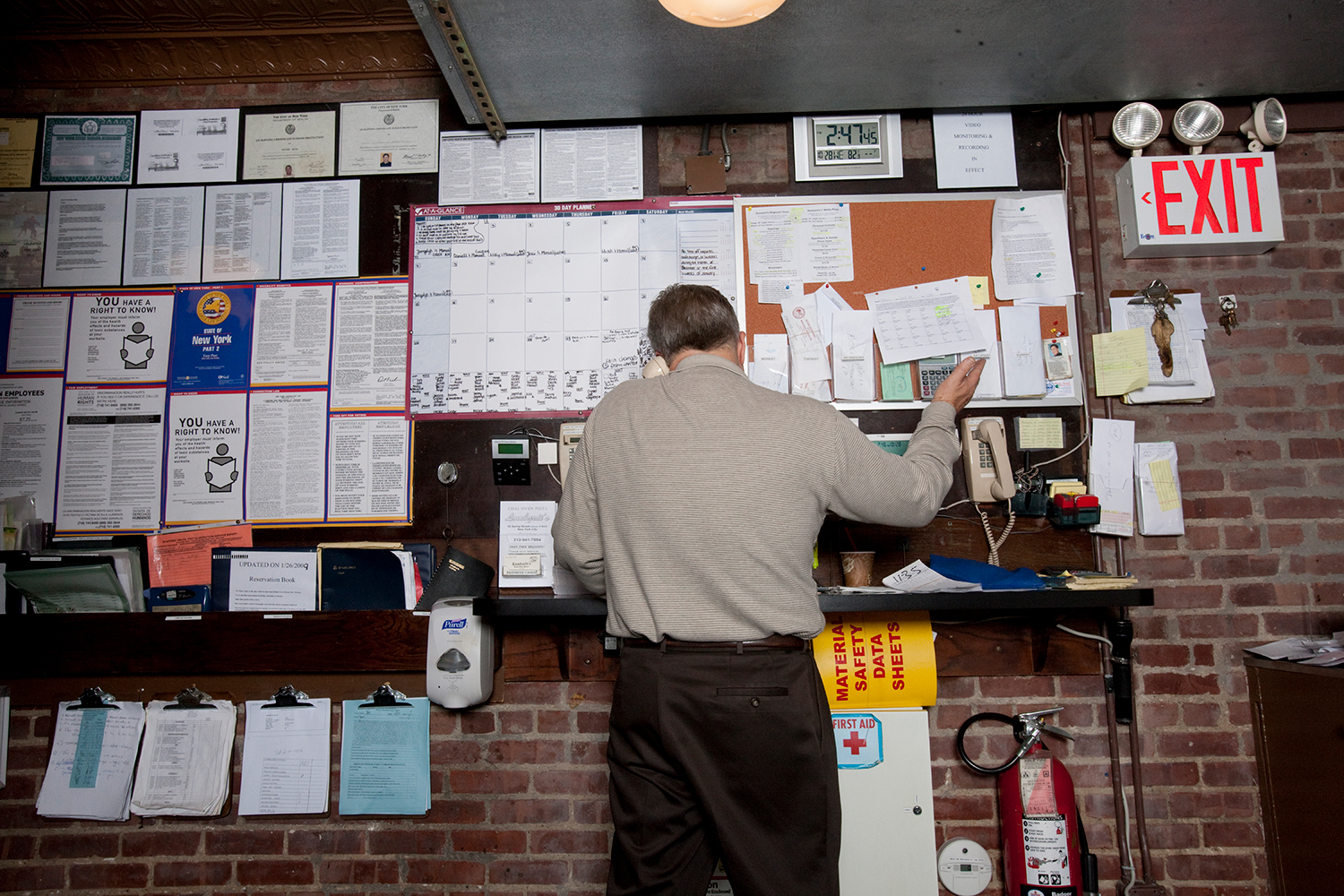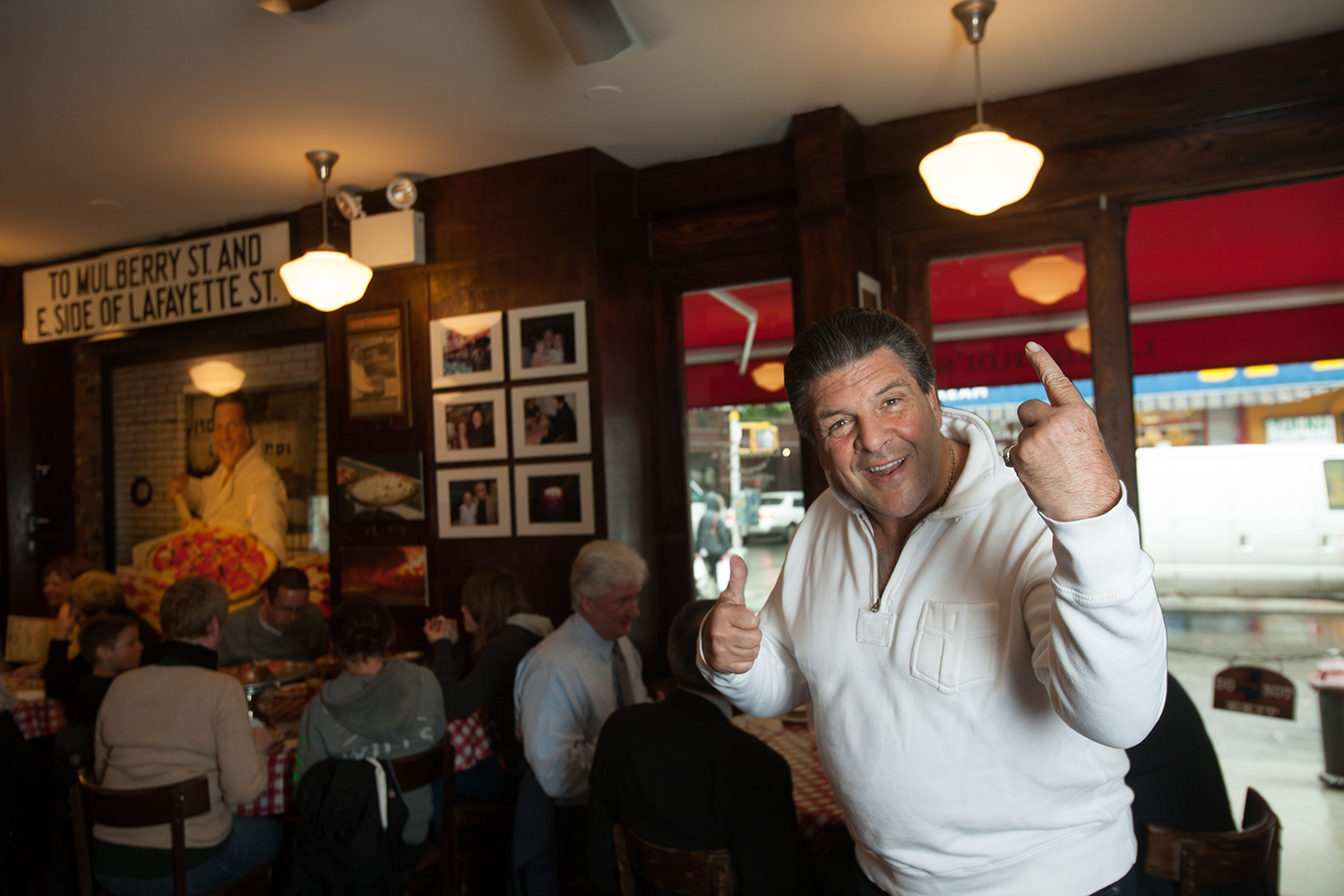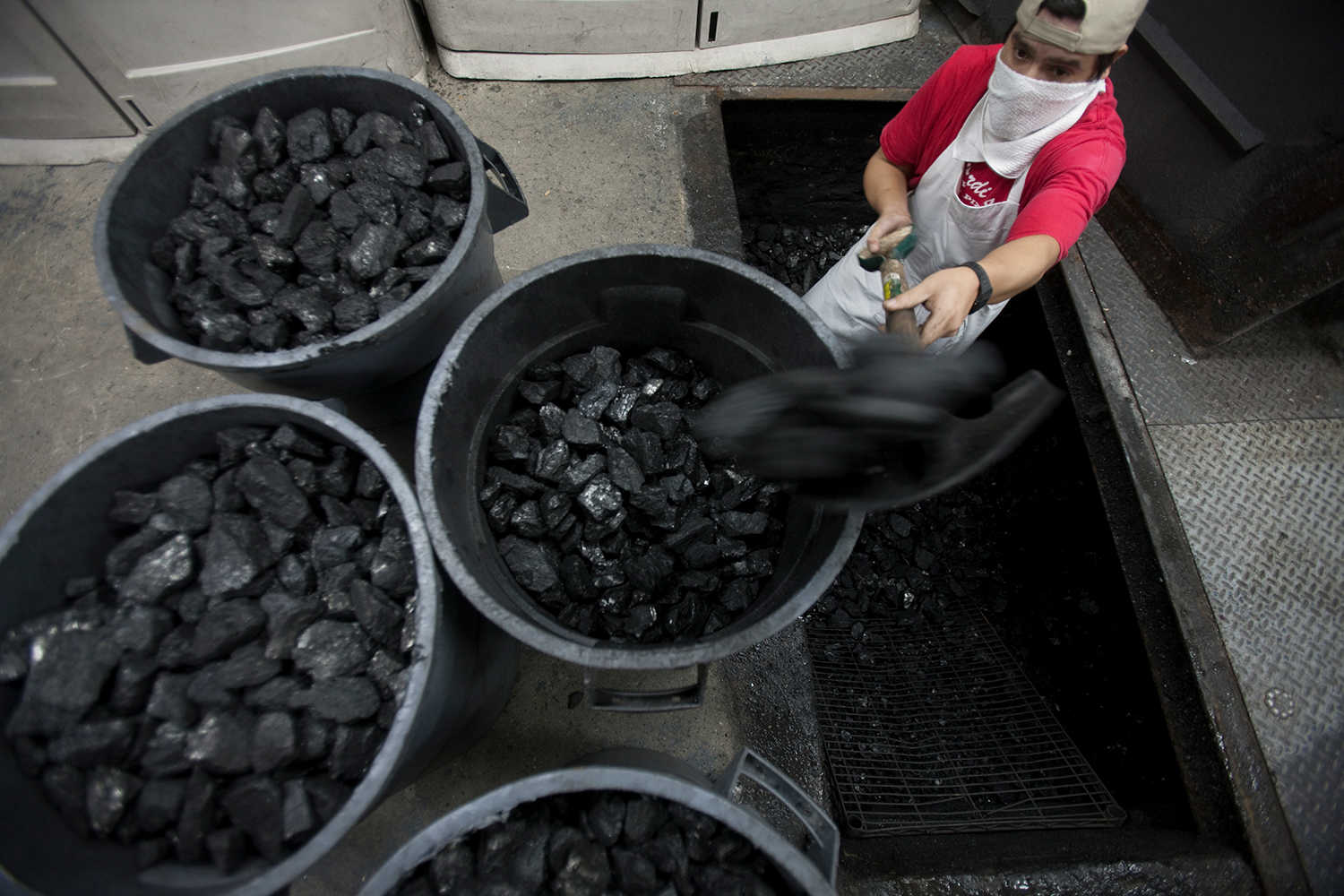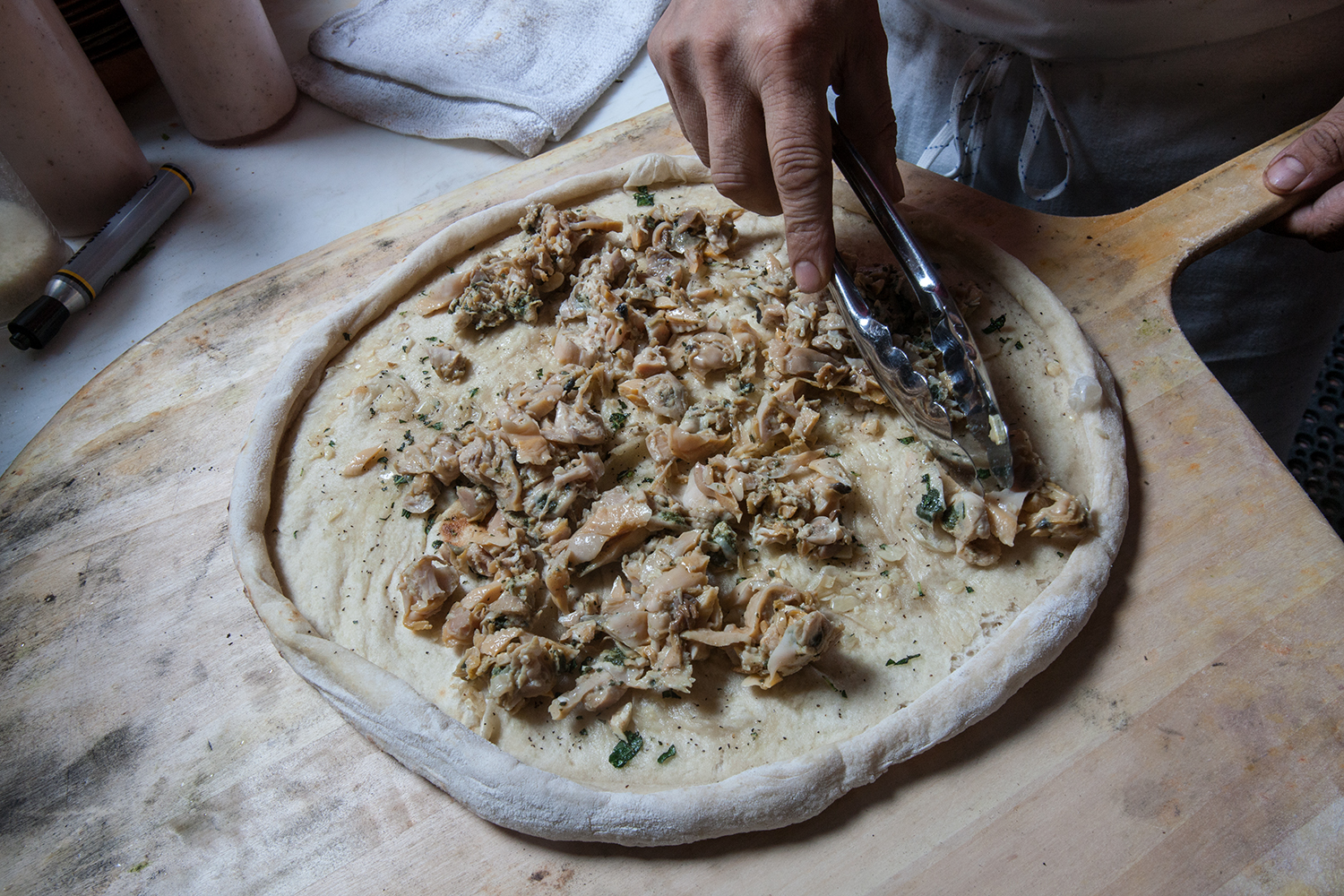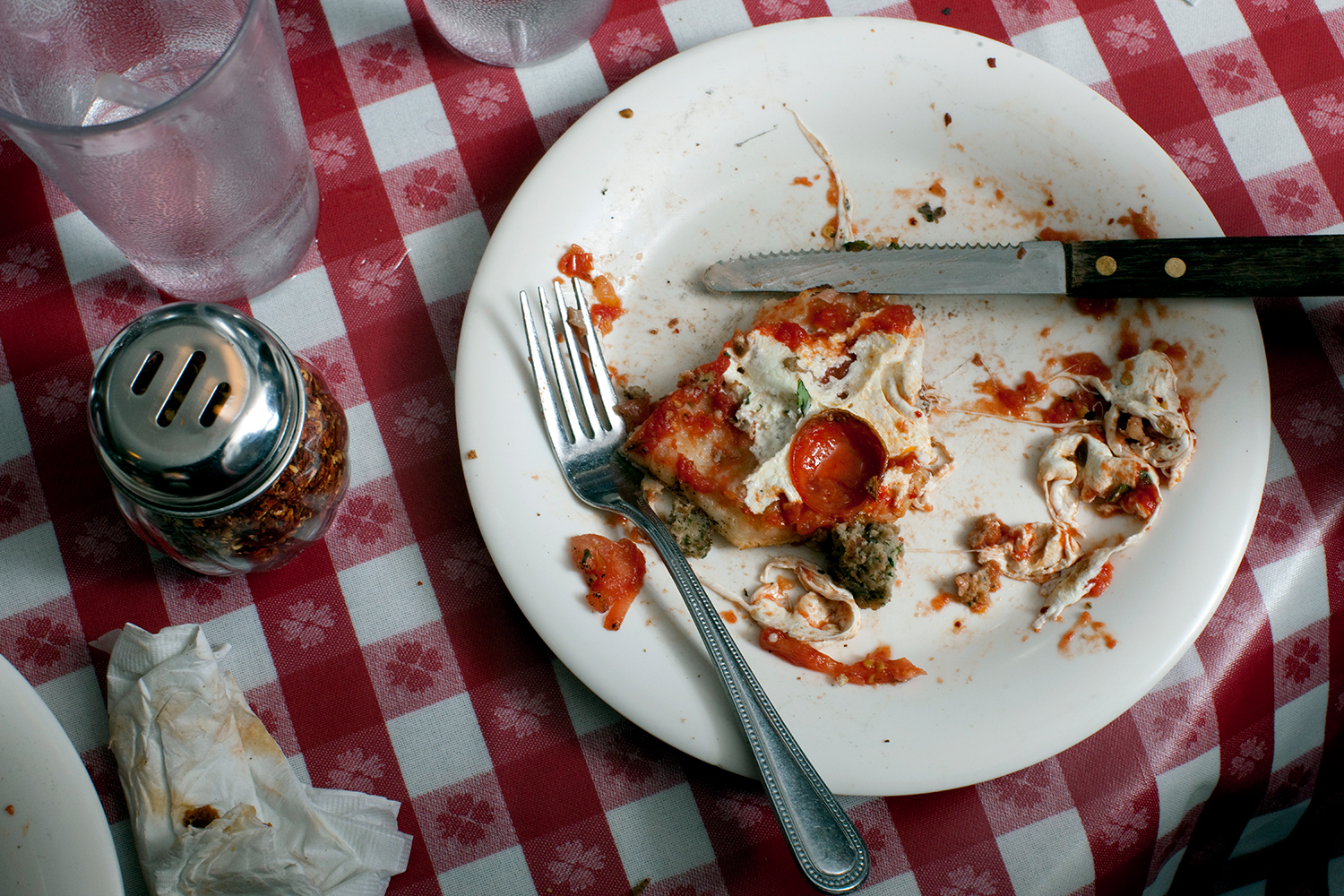Coal Oven
Lombardi’s is widely considered the first pizzeria in the United States. Its success and longevity can largely be attributed to its founder, Neapolitan immigrant Gennaro Lombardi. Regarded as a consummate host and gifted restaurateur, Lombardi created, in the first part of the 20th century, a hub of neighborhood life that evolved into a world famous institution.
In 1956, more than a half-century after the restaurant’s opening, New York Times reporter Herbert Mitgang visited the aging Lombardi and asked him to discuss his phenomenal run. Mitgang wrote that Lombardi “patted the oven and said, ‘this is what made me a man today.’”
The oven he patted bore little resemblance to the compact gas pizza ovens that are ubiquitous in today’s pizzerias. Rather, Mitgang described a coal-burning monster: “A magnificent conglomeration of black-and-white enameled bricks on the outside and terra-cotta bricks on the inside... tons of heat-retaining sand below... seven feet high and twelve feet across and twelve feet deep.” In spite of his success in the restaurant business, Gennaro Lombardi considered himself a baker at heart, tied to his most important tool — the massive coal-burning baker’s oven.
Gas ovens democratized pizza making. They take little training to use. Just turn them on and watch the thermostat. They’re smaller, less expensive, and gas burns cleaner. So why coal? Some claim that pizza from coal ovens tastes better, while others — including pizza guys I know— defend their gas ovens, boasting that their pizza tastes just as good. While I like both, I am awed by the process of making pizza in a magical old way.
***
By 4 am, the Lombardi’s oven has cooled enough from the day before to be cleaned out and relit. The cleanup crew empties the remaining pile of ash into an iron pail and mops up the oven floor. They must use caution when removing the ash because stray bits of glowing hot coal sometimes remain hidden in the pile and, according to Lombardi’s grandson, Gerry Lombardi — who has burned his legs many times — can explode, causing hot particles to scatter beyond the pail. “But that’s part of the business,” he says.
Starting the oven anew is like building a campfire or lighting a grill. On the bottom the oven man first lays rolled up newspaper, then several sticks of kindling, and on top, a shovel or two of coal. He lights the newspaper and within minutes, the kindling catches. Next, he uses a bellows to blow air onto the fire and he opens the flue to create an updraft. Once the coals have caught, he flattens them out and adds another shovelful to two of the corners, so that the fire can grow. It is fed throughout the day, approximately every hour, in order to maintain a temperature of 800-900°.
But the steps required to start the fire and maintain a steady temperature vary. “I gotta tell you, all these ovens are crazy,” Gerry says. “Whatever the temperature is outside, it affects the oven inside. If you get a bad batch of coal, if the fire gets too low, if the fire gets too high, if the ashes build up too high — it’s very difficult to find the correct balance.
“When you work that oven and you put out dozens of pies a day, you control the fire. You got it hot, you got it cold, you got it hot. And you shovel — not a full shovel but a quarter of a shovel, a half a shovel. And then at the same time you work the chimney, where you let 25% of the air go up instead of 50% or 100%, if it gets too hot. Or sometimes you close it down completely to get the fire to choke to death — and then you’ve got smoke in the dining room!
“It’s a sense of accomplishment. You feel really machismo. You feel like, I’m a guy digging ditches in the street. I dug that trench. I put in that pipe. I installed that. I broke my back on this and I’m gonna sleep good tonight. I know how to work the oven. Nobody’s gonna take this job from me. I can call myself a professional.”
***
A coal oven also takes a physical toll on its master. Gerry’s father and grandfather singed their eyebrows and went bald very young from having leaned far into the oven too many times; they burned their hands and arms while reaching in to gauge the temperature; and Gerry’s father had a burn scar on his neck from an errant piece of hot coal.
But something about cooking pizza this way has inspired people to pass the coal tradition along to their children and grandchildren.
“My grandfather would take the kids back to the oven, and my uncle or my father would toss the pie up in the air. Then we’d pick up a kid and he would look in and see the fire. And we’d say, okay, reach in [below] and take a piece of coal. They’d take a piece and we’d wrap it up and put it in a bag and they brought it home.
Years and years later, doctors and lawyers and schoolteachers came in and told the story about when they were kids and how my grandfather and my father and my uncle did that for them. They said, ‘I brought the coal to school and did a book report on coal!’”
With Gerry’s recipes and guidance John Brescio has run Lombardi’s with the same passion for pizza as the Lombardi family did for so many decades. The pies show it. Be sure to check out their hundred year old oven and watch the stickman slide in a new pie, peek inside, move it and spin it around, hold it toward and away from the fire, and — after 3½ minutes — take it out bubbling and done.
******
Notes:
1. A huge thanks to Chris Artis for the amazing edits and guidance with this piece.
2. The captions in the photo slideshow (at top) allude to Lombardi's rich history and its change of location. Aside from the the 1956 NY Times article by Herbert Mitgang (linked above and here), a 1978 article by Francis X. Clines discussed Lombardi's within the context of Italian's exodus from Little Italy. It's a great read. Here it is. Finally, I must sneak this in: a scan from a Lombardi's postcard, c. 1950s (look below). (Other historic photos from Lombardi's are in "The Freedom of Pizza," a piece I posted to Pizzacentric on March 6, 2012.)
--
LOMBARDI’S ESSENTIALS:
Who: Owners John Brescio and Gerry Lombardi. It’s a large restaurant with several dozen employees.
What’s there: Thin crust round coal oven pizza; no slices. The standout toppings are sautéed garlic spinach and coal oven roasted red peppers; the pepperoni’s edges get crispy and add extra crunch to a folded slice. Specialty items are white pizza, calzones, and an excellent clam pie made with olive oil, garlic, black pepper, and steamed and chopped Connecticut top neck clams. There is a small selection of salads and appetizers.
Where: 32 Spring Street, at the corner of Mott Street, in Manhattan’s Little Italy. 212-941-7994. Number 6 train to Spring Street. Also nearby are N or R train to Prince Street; B, D, F, or M to Broadway-Lafayette; and J or Z train to Bowery. Lombardi’s also delivers to nearly all of Manhattan below 14th Street. (Here’s a trick for heating up cold delivery pizza: ask the pizzeria to not cut your pie. Preheat your home oven and a round pan — with mesh grating, if possible — to 500°. When the pizza arrives cook it for one minute, then slice and serve.)
Why go: Lombardi’s was the first official pizzeria business in the US. It has a long, storied history and has been in two locations with a late-‘80s-to-early-’90s gap. The pizza is Gennaro’s original recipe and the oven — first installed by the Parisi Bakery — is over a century old. Lombardi’s is busy, but customers are welcome to observe the activity around the oven.
How: The oven can accommodate 17 large pies, but because they cook so quickly and the process is so labor intensive, ten is the most they make at a time. A pizza man (aka the “stickman”) uses a long wooden stick (aka the “stick”) with a wood or metal peel on the end to move pizzas around, in and out of the oven.
Quote 1: “It’s like a girl, this oven. You know what I mean? You gotta know exactly where to touch it, put the pie, and everything” -- John Brescio, one of the owners of Lombardi’s.
Quote 2: "[In the early days] everybody was making pizza. Every bread bakery made a pizza. But it was a junk food--they used to put it out cold on the counter with the stale bread.” -- Gerry Lombardi, the grandson of Gennaro Lombardi, who founded Lombardi's in 1905.
411: Open 7 days/week. 11:30 - 11 (Monday-Thursday), 11:30 - Midnight (Friday-Saturday).
--
